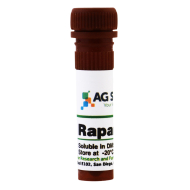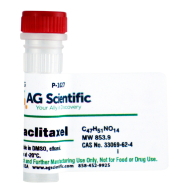The Wisconsin Alumni Research Foundation (WARF) is seeking commercial partners interested in developing a composition of the synergistic anticancer agents rapamycin, paclitaxel and 17-AAG, encapsulated and solubilized by nontoxic, nanoscale PEG-b-PLA micelles.
The Wisconsin Alumni Research Foundation (WARF) is seeking commercial partners interested in developing a composition of the synergistic anticancer agents rapamycin, paclitaxel and 17-AAG, encapsulated and solubilized by nontoxic, nanoscale PEG-b-PLA micelles.OVERVIEW
Two-drug combinations of paclitaxel and rapamycin (an mTOR inhibitor) as well as paclitaxel and 17-AAG (an enhanced version of geldanamycin and Hsp90 inhibitor) have progressed into human clinical trials for cancer therapy. UW-Madison researchers have discovered that paclitaxel, rapamycin and 17-AAG exert synergistic anticancer activity against breast cancer cells. They also have discovered that nontoxic, nanoscale poly(ethylene glycol)-block-poly(lactic acid), or PEG-b-PLA, micelles surprisingly can take up all three cancer drugs, enabling the simple, safe, sterile and synergistic delivery of this three-drug combination, as opposed to conventional vehicles that are toxic, incompatible and require sequential drug administration. Paclitaxel Chemical Structure
Paclitaxel Chemical Structure
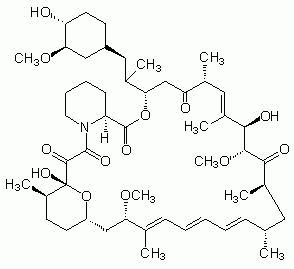 Rapamycin Chemical Structure
Rapamycin Chemical Structure
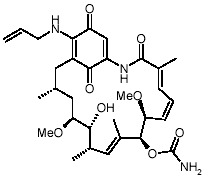 17-AAG Chemical Structure
17-AAG Chemical Structure
INVENTION
A UW-Madison inventor has developed a novel, nontoxic nanoformulation of multiple anticancer agents. This nanoformulation consists of rapamycin, paclitaxel and 17-AAG, encapsulated by safe PEG-b-PLA micelles. These polymeric micelles can be used to safely and effectively deliver multiple active agents, including therapeutics that are poorly soluble in water, enabling the simple, sterile and synergistic delivery of paclitaxel, rapamycin and 17-AAG. The combination of paclitaxel, rapamycin and 17-AAG is particularly effective because it targets the PI3-AKT-mTOR pathway, a common deregulated pathway in cancer, leading to disruption at both AKT and mTOR.APPLICATIONS
- Cancer therapy using a nanocombination of paclitaxel, rapamycin and 17-AAG
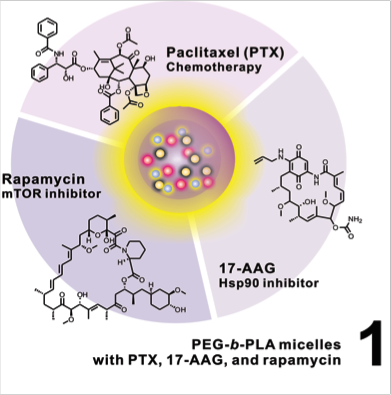
KEY BENEFITS
- PEG-b-PLA micelles containing paclitaxel, rapamycin and 17-AAG are stable and remain soluble in water for 24 hours at room temperature.
- PEG-b-PLA micelles are in Phase II clinical trials for paclitaxel alone and have proven to be safe after IV infusion in humans. Paclitaxel, rapamycin and 17-AAG can be incorporated together into individual PEG-b-PLA micelles or incorporated individually into PEG-b- PLA micelles, which can be administered concurrently or sequentially.
- Levels of paclitaxel, rapamycin and 17-AAG together in PEG-b-PLA micelles reach the level of each drug loaded individually in PEG-b-PLA micelles.
- PEG-b-PLA micelles are safer than toxic excipients like Cremophor® EL or DMSO, enabling the use of higher drug doses for cancer therapy.

